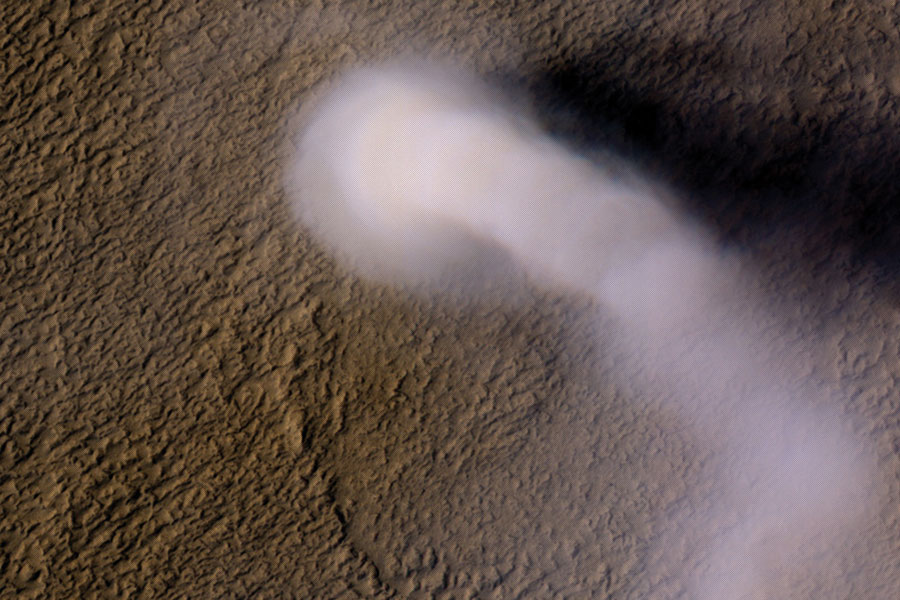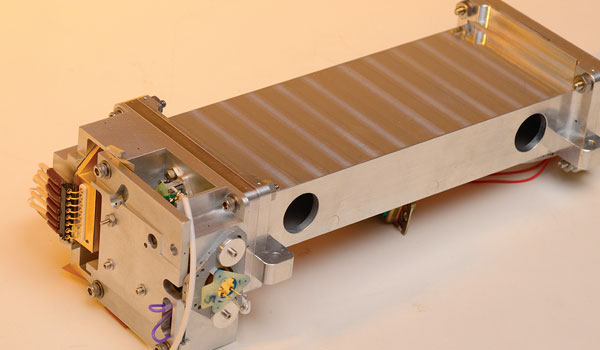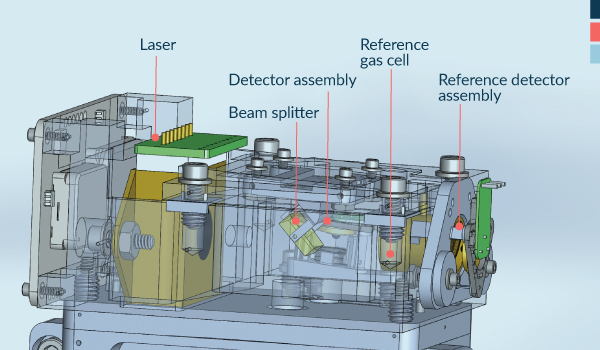Above:
A Martian dust devil roughly 12 miles (20 km) high was captured winding its way along the Amazonis Planitia region of northern Mars on March 14, 2012, by the High-Resolution Imaging Science Experiment (HiRISE) camera on NASA’s Mars Reconnaissance Orbiter. Despite its height, the plume is little more than three-quarters of a football field wide.




